
 |
JPL's Wireless Communication Reference WebsiteChapter: Network Concepts and Standards
|
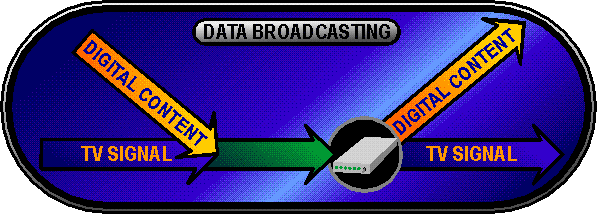
A service provider runs a data broadcast server on which he stores digital content (in a database) that he wants to present to a group of subscribers.
The broadcasted content (files) may be in any format.
Files in HTML format, the standard for Internet pages, or PDF format however are preferred.
The advantage of HTML and PDF files is that users can examine these with standard software (like Netscape or Adobe software).
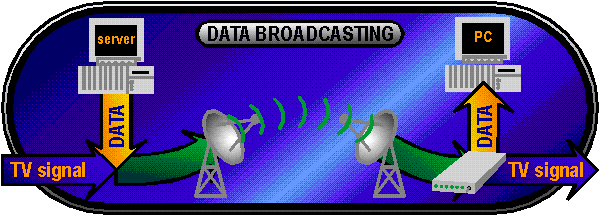
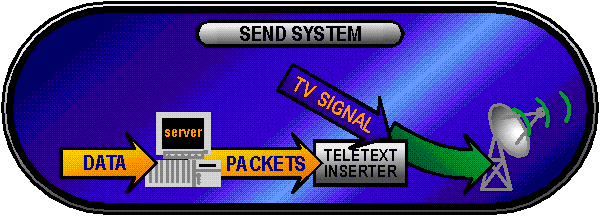
The content provider runs a server on which the digital content is stored that has to be broadcasted.
The data broadcast software on the server schedules when which content (files) has to be broadcasted and translates the content into a format suitable for insertion in the TV signal.
A teletext-inserter combines the content and the TV signal.
The combined signal is broadcasted through present TV-broadcast channels (cable, satellite or terrestrial network).
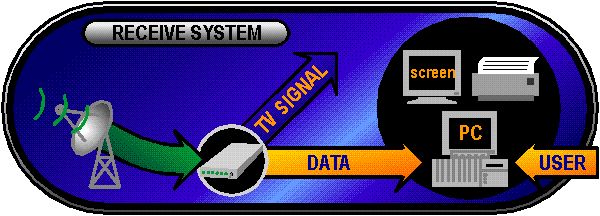
At home a data broadcast decoder separates the information from the TV signal.
The captured content is retranslated by data broadcast software on your PC.
The content is then stored on hard disk, printed, or displayed on a screen directly.
Information stored on hard disk may be examined or edited on your PC.
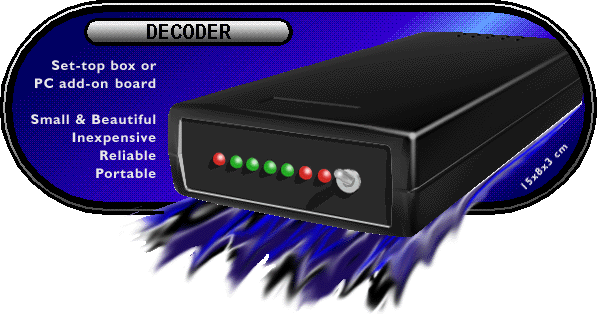
The user needs a decoder to separate the information packets from the TV signal (the TV signal continues on to the TV set).
The Philips data broadcast decoder is a little grey or black set-top box or a PC add-on board.
You have to connect the decoder to both your TV antenna and your PC (coax and RS232).
Installing a data broadcast system is easy, just connect the cables and run the setup program.
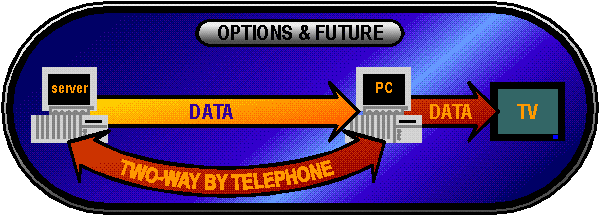
Data broadcasting is a one-way communication system.
Two-way communication can be achieved by telephone.The user can communicate, give feedback, vote, etc., by dialing special telephone numbers and pressing the telephone keys.
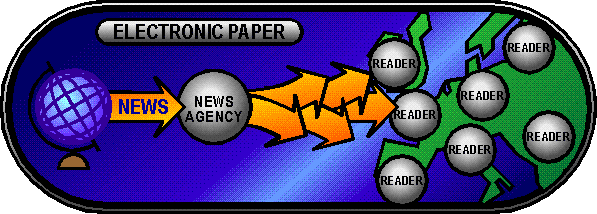
Receive an interactive, up-to-date, colourful newspaper via data broadcasting.
Wherever a TV connection is available the latest news is within your reach.
The news is stored so you can examine the interactive newspaper on your PC or TV whenever you like.
Moreover, your news is never 'old', because printing presses and paper boys do not delay the transmission.